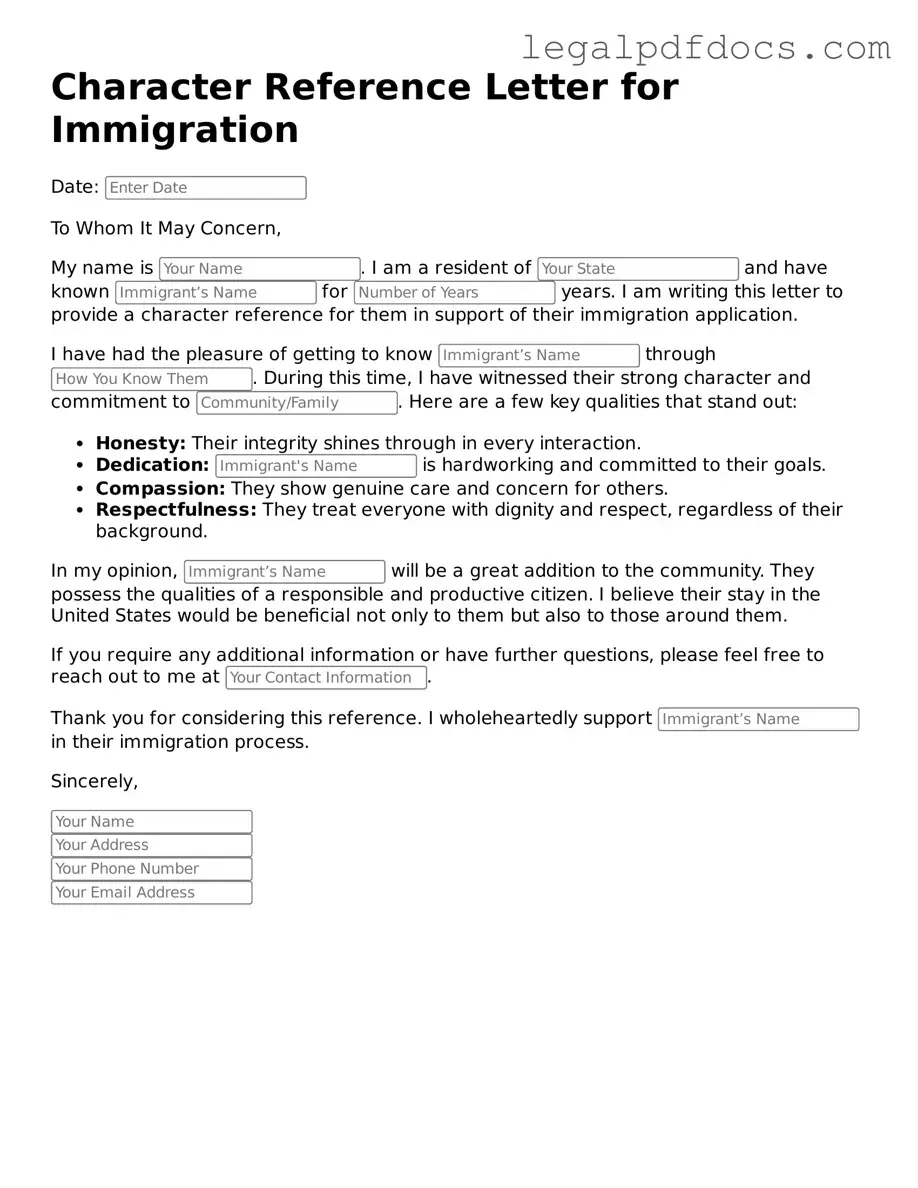Character Reference Letter for Immigration Template
The Character Reference Letter for Immigration is a vital document that supports an individual's immigration application by providing insights into their character and contributions to society. This letter, typically written by friends, family, or colleagues, serves to highlight the applicant's positive traits and their integration into the community. Understanding how to craft an effective character reference can significantly impact the outcome of an immigration case.
Ready to begin? Fill out the form by clicking the button below.
Open Character Reference Letter for Immigration Editor Here
